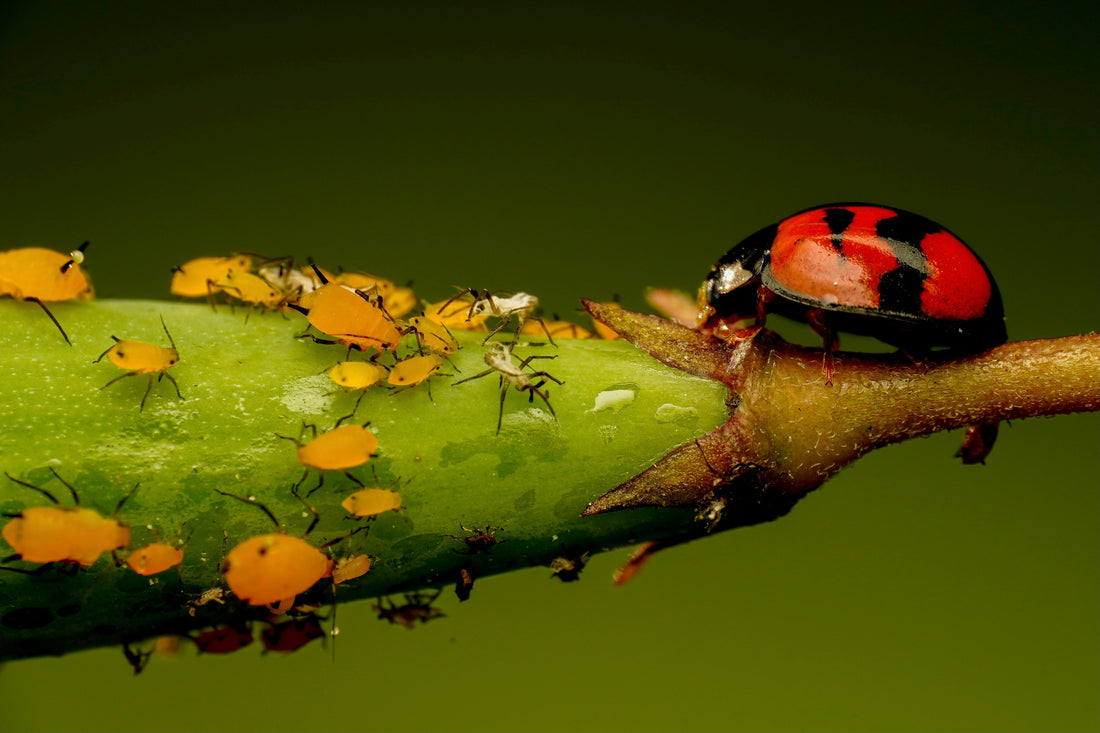
Tips for Addressing Insects in a School Greenhouse
Share
Maintaining a healthy, pest-free environment in a school greenhouse is essential for the success of your gardening program. What do you do when you have unwelcome tiny visitors into your greenhouse, though? Here are some tips for managing insects that have decided that your greenhouse is their new home.
Regular Monitoring
- Conduct regular inspections of plants, soil, and greenhouse structures for any signs of insect activity.
- Use a magnifying glass to check the undersides of leaves and stems for tiny pests like aphids or mites.
- Keep records of your observations to track any patterns or recurring issues.
Maintain Cleanliness
- Keep the greenhouse clean by regularly removing dead leaves, plant debris, and weeds that can harbor pests.
- Clean tools and equipment after use to prevent the spread of insects.
- Dispose of infested plants promptly and properly.
Introduce Beneficial Insects
- Use beneficial insects like ladybugs, predatory mites, or parasitic wasps to naturally control pest populations.
- Introduce these beneficial insects when pest populations are low to moderate for the best results.
Apply Organic Insecticides
- Use organic insecticides, such as neem oil or insecticidal soaps, which are safer for students and the environment.
- Apply these treatments early in the morning or late in the evening to avoid harming beneficial insects.
Implement Integrated Pest Management (IPM)
- Combine multiple strategies for pest control, including biological, cultural, mechanical, and chemical methods.
- Use chemical treatments only as a last resort and choose products that are safe for use around students.
Encourage Healthy Plant Growth
- Maintain optimal growing conditions such as proper light, temperature, humidity, and soil nutrition to keep plants healthy and resilient against pests.
- Avoid overwatering or under-watering, which can stress plants and make them more susceptible to insect attacks.
Use Physical Barriers
- Install insect screens on windows and vents to prevent pests from entering the greenhouse.
Rotate Crops
- Practice crop rotation to prevent the build-up of pest populations that target specific plants.
- Avoid planting the same type of plant in the same location for consecutive seasons.
Educate Students
- Involve students in monitoring and managing pest control as part of their learning experience.
- Teach them about the importance of maintaining a healthy greenhouse environment and the various methods used to control pests.
Consult Experts
- If things get really bad, seek advice from local agricultural extension services or professional pest control experts.
- Attend workshops or training sessions to stay updated on the latest pest management techniques and best practices.
By following these tips, you can effectively manage insects in your school greenhouse, ensuring a healthy and productive growing environment where your students and plants thrive.
Check Out
Interested in getting a greenhouse for your school? Check out our Caterpillar Tunnel Greenhouse! It’s affordable and easy to setup!
Looking for an outdoor garden for your greenhouse or open space? Check out our robust 10’ x 10’ Garden Program!
Are you looking for ways of connecting the greenhouse to the classroom? Check out our blog with lesson and activity ideas!
